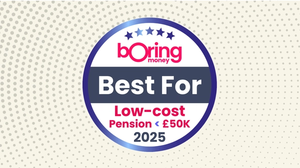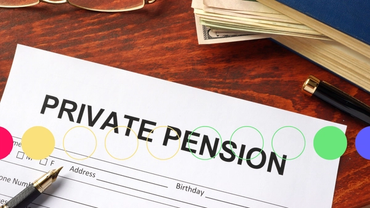Making the most of your pension before 5th April next year
29 Sep, 2022
Make hay - how to max your pension
Top earners have 6 months left to turn 55p into a pound
A cunning wheeze - what the hell is Bed and SIPP!?
Amid the meltdown in markets, it is easy to forget that there were tangible changes for individuals in Chancellor Kwarteng’s ‘mini-budget’. Assuming that the Chancellor is not forced into a humiliating reversal of these plans, it is worth re-examining pension arrangements in light of the new rules set to come in in 2023.
All in all, it was a pretty good budget for the wealthy. The Chancellor abolished the top rate of tax, previously payable on income over £150,000. Top earners will also get the full benefit of other tax cuts, including the reversal of the National Insurance rise and the cut in the basic rate of income tax – from 20p in the pound to 19p. Someone earning £200,000 will be around £5,200 better off under the new rules.
However, it will change the landscape for pension contributions. Until the change, high earners have been able to claim a chunky 45% tax relief on annual contributions of up to £40,000. This applies to all except those earning over £240,000, whose annual allowance is tapered down to as little as £4,000. Those paying the basic rate of tax have seen 20% tax relief on their contributions, which will also drop.
This will shift in April as the tax rates change. Steven Cameron, pensions director at Aegon, said: “The abolition of the additional rate of income tax will be very welcome news for those earning above £150,000, but it does come with a sting in the tail when it comes to personal contributions to pensions. These benefit from a ‘tax relief’ top-up at the individual’s highest marginal rate of income tax which means currently, high additional rate taxpayers can receive 45% tax relief. Put another way, a contribution of £550 out of take-home pay becomes £1000 when invested in a pension. In future, the highest marginal rate will be 40% so the same £1000 in a pension will cost £600 from take-home pay.”
Becky O’Connor, head of pensions and savings at interactive investor, says this will also apply to basic rate tax payers investing through their company: “The way pension contributions work in most workplace schemes means that the overall contribution will remain the same, but the cost of this to the individual will increase slightly.
“As a basic example, if someone is paying £100 a month into their pension, the ‘cost’ to them of doing so becomes £81 rather than £80 following the income tax reduction. For most people paying this amount into a workplace scheme, the overall contribution will remain the same, but they would be paying £1 a month more for the privilege.” For those that contribute more to their pension, the impact will be felt more acutely.
However, there is a window of opportunity ahead of the tax rises in April to make contributions at the higher rates. The top earners have six months to make contributions that only cost them 55p for every £1 in committed to their pension.
For those that are already bumping up against their annual allowance, or whose earnings are high enough that they start to see a tapering in their annual allowance, there are options. It is worth remembering that unused pension allowances can be carried forward for three years. If someone has only contributed £20,000, for example, each year in the previous three tax years, they will have a chunky £60,000 extra allowance if they want to max out ahead of the changes.
They will need to be careful about the lifetime allowance. The government limits the amount that can saved in a pension over a lifetime, currently £1,073,100 in the tax year 2022/23. This sounds a lot, but can sneak up. A 40-year old with a pension pot of £350,000, contributing £200 a month, with growth of 5% a year would be bumping up against the lifetime limit aged 60. That said, maxing out a pension pot early and at higher rates, gives an easier run to retirement.
For those who might not have £40,000 lying around (even high earners have mortgages on their castles), so-called “Bed and Sipp” can be an option. This is where existing investments are sold (which might incur capital gains tax so consider this) and the proceeds rolled into a personal pension, where they are bought back. The investor gets the advantage of the tax relief, and the investments are then sheltered from tax into the future. Do talk to your provider about this to make sure you’re doing this properly.
Of course, even 40% tax payers should still be topping up their pension contribution on an ongoing basis. They won’t be on the clock as the 40% tax rate isn’t changing, but they will be able to get the benefit of compound growth for longer. Equally, while trying to time the market is never a particularly good idea, stock market valuations are lower than they have been for some time and it may be a good moment for long-term investors to pick up a bargain (although we don’t want to get into the game of trying to call the bottom of the market). Drip feeding in and setting up a direct debit is often the best way.
These have been some unsettling times in financial markets, but the long-term advantages of pension savings hold firm. It is a good rule of thumb that the more invested into a pension at the highest rate of tax relief possible, the better. Higher rate tax payers have a six month window to take advantage.







